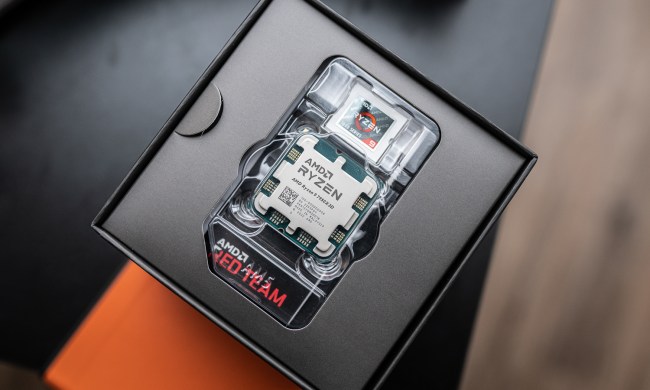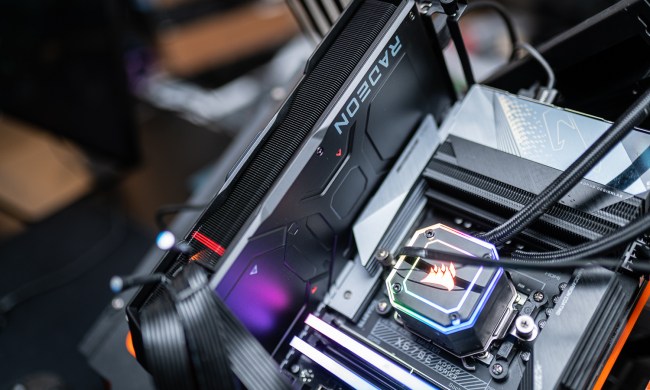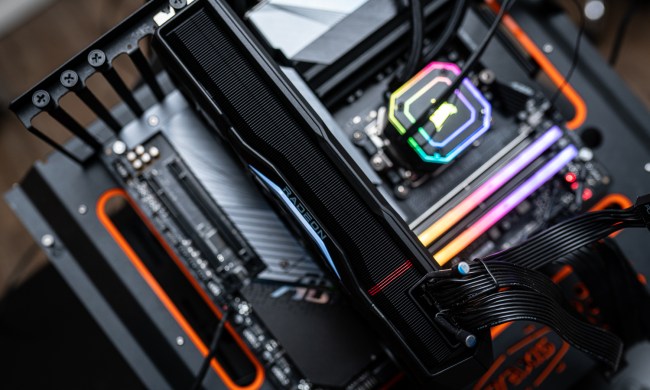
Computer maker MSI might be getting a lot of attention for its low-cost Wind netbooks, but the company also pumps out an array of other computing products—including, just today, the new MSI GX733 gaming notebook. The GX733 features an AMD Turion X2 Ultra Dual-Core processor, ATI Mobility Radeon 4670 3D graphics (with 512 MB of dedicated video memory), HDMI output, a 17-inch WXGA display, and—this may be the kicker for gamers—a one-touch “turbo” button above the keyboard that can boost the speed of the CPU when the machine is connected to AC power. Actually, the GX733 can switch between five modes with MSI’s Eco Engine power management system: gaming, movie, presentation, office, and a turbo battery mode which maximized battery performance.
The GX733 features a threaded aluminum case with flames (to emphasize the system’s speed) and an “aerodymanic” touchpad (we’re sure wind resistance is a real issue here) with a black mirror plate. The system sports a separate numeric keypad and hilighted WASD keys for gaming convenience. The GX733 also features four integrated speakers (plus subwoofer(), a two megapixel Webcam, a 4-in-1 card reader, 802.11b/g/n Wi-Fi and Bluetooth wireless networking, gigabit Ethernet, a Super-Multi DVD burner, and from 180 to 500 GB of hard drive storage. The GX733 will be available with either 6 or 9 cell batteries, and touts 3 USB 2.0 ports, HDMI output, an eSATA port, mic input, and a PCI Express card slot.
MSI hasn’t released any information on pricing or availability for the GX733, but the systems should begin appearing at the company’s North American retail partners soon.


